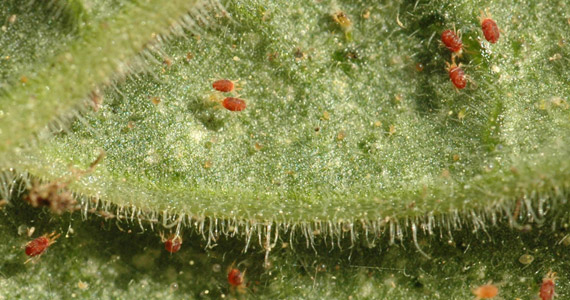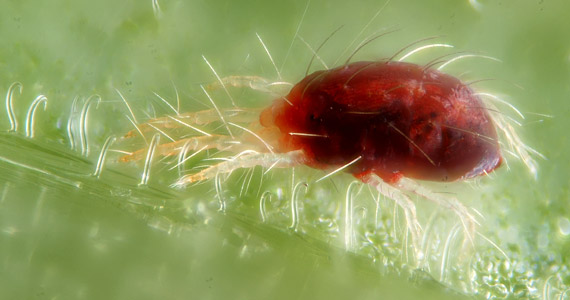Spider Mite – Pests & Diseases
About the pest in brief
- What are spider mites?
- Spider mites are not insects and are in fact more closely related to spiders. They belong to a class called Arachnida.
- What can you see?
- Spider mites usually spin a silk webbing. When spider mites infest plant leaves, they damage the plant tissue leaving yellowing and dead spots that coalesce until eventually the entire leaf is affected. The leaf will turn yellow, wilt and finally be shed. There are some varieties of mites that do not spin webs and live in the plants bud terminals, where the damage cannot be seen until the tip expands.
- What can you do?
- Spider mites have several natural enemies that can be used to control the population.
Biological cycle of spider mites
Each female two-spotted spider mite lays 10-20 eggs per day, and 80-120 altogether during its life cycle of up to four weeks. These are mostly attached to the silk webbing. The six-legged larvae hatch after 3-15 days. Newly hatched larvae are almost colorless and have bright red eyes. They moult three times within 4-5 days, becoming a protonymph, then a deutonymph and finally the adult form. Both adults and nymphs have eight legs.

Symptoms of the pest
The first visible symptoms will be small yellowish or whitish specks, mainly around the midrib and larger veins of the leaves. If these spots grow bigger and merge, the empty cells give some areas of the leaf a whitish or silvery-transparent appearance.
How to prevent the pest?
To minimize the risk and rapid spread of spider mite infestations, try to keep the temperature lower (60 %), since this will slow the rate of reproduction. Higher humidity is also needed for the predators of the spider mite. Keep your growing areas clean and remove all leaf litter. Adequate irrigation is important, because water-stressed plants are more likely to suffer damage.

Solutions for controlling the pest
When you see spider mites (recognizable from silk webbing on top of the leaves), remove the affected leaves. Spray the plant thoroughly with a mixture of alcohol and soap. Repeat this treatment several times a week.
You can also use natural enemies: predatory mites, ladybirds, predatory bugs and lacewings.